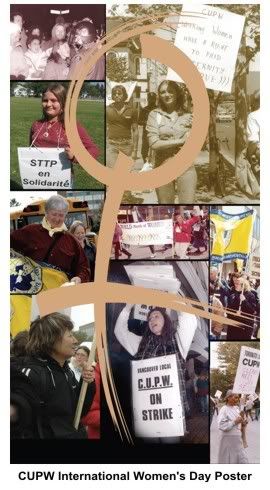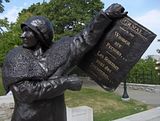I Knew I Could Do This Work

The report, by the Institute for Women's Policy Research and funded by the Berger-Marks Foundation--a foundation established by The Newspaper Guild to encourage and train female organizers and activists--also lays out specific ways to achieve that goal, while pointing out again the obstacles women face.
Those obstacles occur even in majority-female unions, such as AFSCME, the Communications Workers, the Teachers and the Service Employees, the report, named I Knew I Could Do This Work, notes.
The new report, released Dec. 5, follows a previous Berger-Marks study of female organizers and their successes, frustrations and--in many cases--burnout. The new report draws on both data garnered in surveys and in-depth interviews with 15 female union activists: 6 from CWA, 8 from AFSCME and 1 from SEIU. They include journalists, janitors, clerical staff, horticulturists, interpreters, nurses, and teachers.
It notes 44% of all unionists are female, but women are vastly underrepresented in leadership positions. "In no case does the proportion of women in leadership equal the proportion in membership," the report says. AFT and AFSCME come closest: 39% of AFT local leaders and organizers are female, as are 60% of members. AFSCME's local leadership is 38% female, but 52% of its members are women.
Obstacles to increasing women's leadership roles within unions include:
- Too few women serve at the top of union leadership, where they could be role models, support activism and promote women's perspectives.
- "As a more vulnerable workforce, women and people of color have an acute fear of retribution by employers through firing or other tactics."
- Women are often uncomfortable in leadership roles because they are supposedly not appropriately "female" roles.
- ‘Unions place inadequate emphasis on the issues, concerns, and priorities of women workers," and--on the flip side--women have trouble making time for demands of union work, because they "are still expected to shoulder most family obligations." Many women also "have insufficient awareness of the benefits of unions to their lives as workers," the report adds. Having laid out the problem, the IWPR report suggests strategies to solve it and to promote women in unions:
- Address women's priorities using imagery and language that reflects their experiences--and create ways to find out what their concerns and values are. Many unions, for example, do not consider women's health issues when negotiating health benefits in contracts.
- Create and support formal mentoring programs for women, along with "creating and supporting dedicated space for women to address their concerns."
- Putting more women into leadership positions, locally and nationally. The AFL-CIO has set a goal, by its 2009 convention, that the proportion of women and minorities in union delegations should reflect their proportions in union membership. The report notes, for example that CWA--the parent union of The Newspaper Guild--is 51% female, but only 12% of its leaders are women. Its 19-member board has 4 women.
- Institute measures to "highlight the importance of women's contributions" to the union movement.
- Give women "flexible options for involvement by providing child care and other supports, finding creative times and places to meet, and looking for women's input on these and other strategies," and "provide training on effective ways to mobilize women."
For more information
Read the full report at http://www.iwpr.org/pdf/I917.pdf










No comments:
Post a Comment